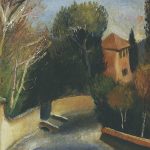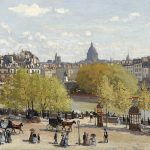Robert Tanitch reviews Bruegel: The Master (Thames & Hudson £45).
Pieter Bruegel the Elder (1525/30-1569), the greatest of the Flemish 16th century artists, famed during his lifetime, was a profound and religious humanitarian. The book is a handsomely informed survey of his paintings, drawings and prints and the originality of their execution.
There are so many familiar works to relish: Hunters in the Snow (a beautiful landscape in snow); the Tower of Babel, a colossal building in progress (a striking parable of grandiose hubris); The Blind Leading the Blind; The Peasant Wedding and The Peasant Dance. The peasants, bursting with energy, burst out of the canvas.
The virtuosic, intriguing drawing of Everyman is a complex search for self-knowledge. The same figure is repeated in six different places.
Bruegel was a moral teacher and his initial works, heavily influenced by Heironymus Bosch, focus on human folly: The Seven Deadly Sins (an outlandish morality play); The Triumph of Death (a brutal and bloodthirsty apocalypse); Dulle Griet, a peasant woman in armour stands at the mouth of a hell consumed with fire, ready to do battle with the demons. (Griet has been taken up by the feminists.)
The panoramic landscapes are monumental. The canvases are crowded with tumultuous horrors.
The painting of John the Baptist preaching is all the more powerful and religiously relevant because John is preaching to a 16th century Flemish crowd. The most striking image is the unexpected interpretation of The Adoration of the Magi. The menace created by the elongated figures is very unsettling.
Bruegel holds up a mirror to human nature and is famed for his records of everyday peasant life: peasants at work and at play, haymaking, harvesting, hunting, herding, beekeeping, begging and merrymaking, feasting, dancing and weddings. The satire is affectionate and the humour is earthy. How many games and how many people can you find in the allegorical and enigmatic Children’s Games?
There is so much to read, so many 16th century proverbs to dissect, so many witty tongue-in-cheek allusions, so much to savour, the book is a spectacular treat.
To learn more about Robert Tanitch and his reviews, click here to go to his website





